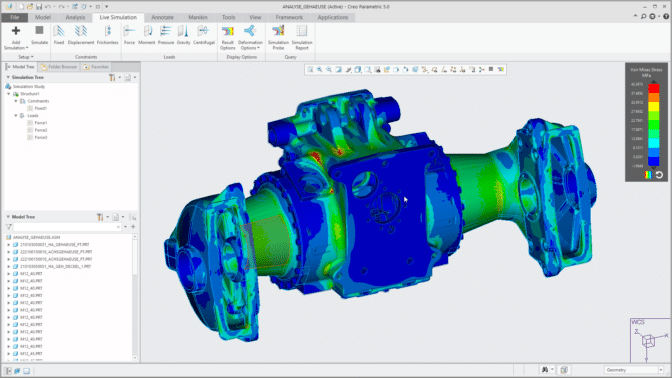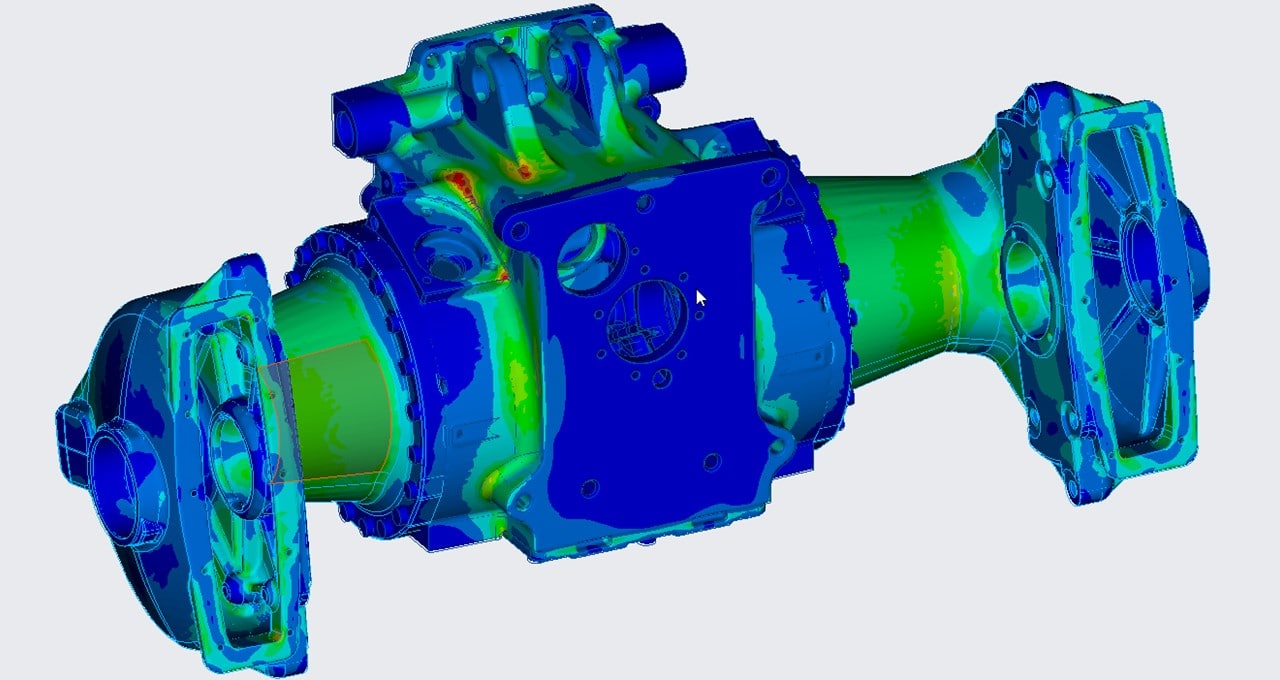Hundreds of thousands of designers and engineers can now experience an extraordinary change in their product design workflows.
PTC Inc.’s Creo Simulation Live is a new software tool accelerated by NVIDIA Quadro GPUs that quickly performs mechanical simulation on 3D models and displays the results in near real time.
Users can evaluate and modify designs earlier than ever, resulting in huge time and cost savings during product development, and boosting innovation.
Based on the NVIDIA CUDA parallel computing platform, Creo Simulation Live enables product designers and engineers to run an analysis with a single click, instantly visualizing the effect of changes they make to their designs.
Users can quickly experiment with numerous alternatives and narrow down design options. Early evaluation of design modifications — such as lightweighting studies — results in dramatic time and cost savings during product development.
Available now to Creo users around the world, Creo Simulation Live is easy to use and doesn’t require the intricate process of meshing and post-processing that is needed for engineering simulations. This makes it accessible to a wide range of product designers who can now transform how they work on digital models.
“The Creo model’s easy-to-use interface and near instantaneous results mean our designers have much more freedom to explore design iterations as they digitally refine the product,” said Randy Soukup, engineering systems analyst at Daktronics, an electronics company based in South Dakota. “A recent redesign of one of our products required the creation of nine physical prototypes. Using Creo Simulation Live, we could’ve reduced that by two-thirds to just three physical prototypes.”
GPU-Accelerated Simulation
Manufacturing companies are using NVIDIA Quadro GPUs to remain ahead of the competition. ANSYS announced availability last year of ANSYS Discovery Live, which combined rapid simulation with direct geometry modeling and introduced the concept of interactive simulation during the design process.
The structural, modal and thermal simulation capabilities of ANSYS Discovery Live are now natively integrated into PTC’s Creo Parametric mechanical design software as Creo Simulation Live.
Quadro performance scales up the stack, so the more powerful the GPU, the faster the performance. A minimum of 4GB of GPU memory is required for real-time interactive simulation. For faster visualization and higher fidelity, a minimum of 8GB of GPU memory, as offered in the NVIDIA Quadro RTX 4000, is recommended.


In addition to running these tools on NVIDIA Quadro graphics-powered desktop and mobile workstations, engineers and design teams can run real-time simulations from the data center with a virtual machine running Quadro Virtual Data Center Workstation software (Quadro vDWS).

Learn more about Creo Simulation Live or download the Advanced Product Design for Industry 4.0 e-guide series.
1) Tests run on a workstation with Intel Xeon Gold 6154 (3.0 GHz (3.7GHz Turbo), 18 cores, 36 threads, 24.75MB cache), 64GB RAM DDR4, Windows 10 RS4, NVIDIA Driver 417.04. Performance testing completed with a range of models for each of the three simulation types available in Creo Simulation Live v5.
* Tests done with ANSYS Discovery Live. Creo Simulation Live is expected to produce similar relative performance results.
ANSYS Discovery Live fidelity increases with GPU memory; 4GB of GPU memory was used in each of the GPUs benchmarked (the baseline Quadro M2000 has 4GB GPU memory).
2) Tests run on a workstation with Intel Xeon Gold 6154 (3.0 GHz (3.7GHz Turbo), 18 cores, 36 threads, 24.75MB cache), 64GB RAM DDR4, Windows 10 RS4, Resolution: 1920 x 1080, NVIDIA Driver 417.04. Performance testing completed with a range of models for each of the three simulation types available in Creo Simulation Live v5.
* Tests done with ANSYS Discovery Live. Creo Simulation Live is expected to produce similar relative performance results.
ANSYS Discovery Live fidelity increases with GPU memory; 4GB of GPU memory was used in each of the GPUs benchmarked (the baseline Quadro M2000 has 4GB GPU memory).
